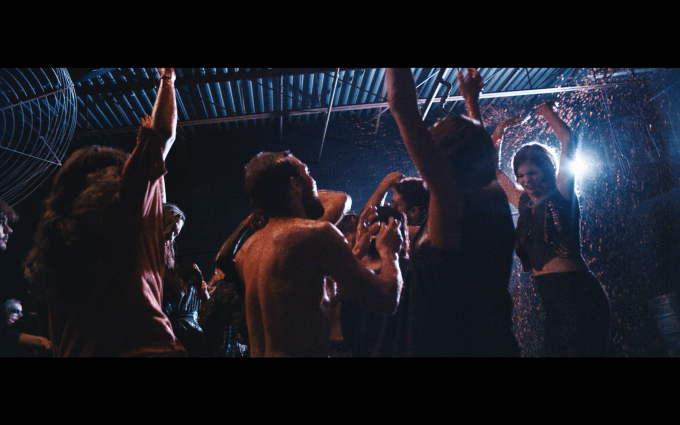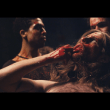By Karoun Chahinian
A group of Ryerson graduates and students were part of the production team for Canadian singer Grimes’ new music video “Kill v. Maim,” which is already being predicted as one of the best videos of 2016 by Time Magazine.
Grimes directed the video alongside her brother Mac Boucher, who also works at the creative branding company Route Eleven that was hired to help with production. The company was created by past Ryerson students and one of them was Ryan Tremblay, who was casted as a coproducer.
“When I first heard the song, I fell in love with it and was so excited to be part of the production team,” said Tremblay. “I think her ideas are awesome, they come from a place of pure creativity.”
The other original owners of Route Eleven that worked on the video were Kurtis Chen, 1st Assistant Director, and Peter Lilly, Data Management Technician.
Crimson Fish, a half production and half equipment rental company created and operated by Ryerson film graduates, was also offered the opportunity to help produce her new video, and they have worked alongside Route Eleven on multiple projects in the past.
“We like to think of Crimson Fish as our sister company, we try to work with them as much as possible,” said Tremblay, the co-producer. “They are so talented when it comes to production and handling equipment.”
The video was made in under a month and Grimes personally did all of the editing, which Neil Hansen, a co-producer from Crimson Fish, described both as unusual for projects of this calibre.
“It all came together pretty quickly,” said Hansen. “We got started in the beginning of November and then shot in the second week of December, which is pretty quick for a big project like this.”
Grimes is known for her unique artistic style and that was well illustrated in her new video which involves blood raves, futuristic cars, and dystopian dance parties. During the brainstorming sessions for the video, Hansen said the producers would just go along with the unique ideas brought up because they couldn’t envision them until they were brought to life on set.
“Whenever we would listen to Grimes’ creative ideas, our first reaction would be to just smile and nod,” said Hansen. “I don’t think any of us really understood what she was going for with the video until we were on set and it all came together, we were like ‘Oh, that’s what you pictured!’”
As one of the owners of a branding company, Tremblay said their ultimate purpose when working on a music video or any project is to represent their client authentically.
“We really wanted to represent her vision as best as we could, she is very creative and always comes up with crazy ideas, our job is to figure out what’s practical and what can be pulled off,” said Tremblay. “In order to make those ideas a reality, there’s a lot of planning that goes on behind the scenes and everyone really stepped up to the plate.”
A few scenes from the video were shot in the abandoned Lower Bay Station, which is underneath the existing Bay Station and is often filled with film producers.
“It was my first time in there and that was a really cool experience,” said Hansen. “There’s a running subway platform above you, so whenever a train would pass, it just felt like an earthquake and it was so loud. Fortunately, we were shooting later in the night, so it didn’t happen as often.”
Another memorable part of the video was the blood rave, which Hansen said was exhilarating to shoot.
“I was in the middle of the mosh pit and half of the scene is just me being thrown around with the camera while people are running around and pushing one another,” said Hansen. “That was a surreal experience. We had around 30 people slipping and sliding in fake blood, pushing and tackling each other, and I was just right in the middle of it.”
Ryerson was not only represented through Crimson Fish and Route Eleven, but there were also dozens of Ryerson students and graduates helping out on set or were used as extras in scenes, one example being the rave.
“There were a lot of Ryerson students or graduates ons set, they work hard and are great employees,” said Tremblay.
Both Tremblay and Hansen agreed that the most valuable part of Ryerson’s film program was being able to collaborate with hundreds of creative and talented film students.
“You’re never going to learn as much from the teachers as you are from the students,” said Hansen. “It’s not only a networking experience, we feed off of each other’s creativity, we learn off of each other’s work ethic, and it’s a place where you can expand your way to shoot film. That’s pretty unique.”

















Leave a Reply